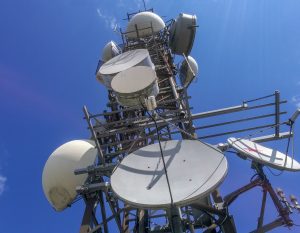Overcoming Challenges in 5G Network Infrastructure: Addressing Passive Intermodulation for Enhanced Connectivity

By Dr. Pranati Sahoo
5G communication has the potential to revolutionize various industries by offering faster and more reliable connectivity. Once the 5G network infrastructure is fully developed, the experiences available to humanity will be remarkable. Faster movie downloads on our phones are just the beginning—5G will enable real-time connectivity solutions that expand the Internet of Things and facilitate immediate, critical operations, such as autonomous vehicles or doctors performing delicate surgeries remotely via live feed from hundreds of miles away.
However, establishing a fully operational 5G network requires substantial infrastructure and time. There are numerous challenges associated with developing this 5G network infrastructure.
Examining 5G Network Infrastructure Challenges

Building 5G infrastructure involves significant deployment costs for new equipment, technology, and site acquisition. The need for a dense network of small cells and antennas requires extensive physical infrastructure, which can be challenging to install in both urban and rural areas. Addressing the environmental impact of increased infrastructure and energy consumption is necessary for sustainable development. Additionally, navigating the regulatory landscape and ensuring compliance with local and international policies can be challenging.
From a technical perspective, access to the necessary radio frequencies is crucial, and competition for spectrum can be intense, requiring careful management and regulation. 5G technology is complex, necessitating advanced hardware and software solutions, which can pose implementation challenges.
For instance, components within 5G units are densely packed, leading to significant heat generation. It is essential to conduct this heat away from the source, particularly from critical components. Higher 5G frequencies can negatively impact signal integrity, potentially causing distortion in the electrical signal. Therefore, addressing signal-integrity issues early in the design process of these high-performance products is crucial.
Improving Signal Integrity for Better 5G Communication
As antennas become more widespread, ranging from large outdoor installations to compact device assemblies, minimizing signal interference is essential. The continuous installation of new equipment, combined with a higher density of modulation symbols, exacerbates challenges related to Passive Intermodulation (PIM).
Understanding Passive Intermodulation
Passive Intermodulation (PIM), often referred to as the “rusty bolt effect,” is a significant concern in 5G wireless communication, and its impact has been increasing over time. PIM is a form of intermodulation distortion (IMD) that occurs when multiple signals at different frequencies interact in a nonlinear environment. This interaction within a nonlinear system or device results in the generation of numerous unwanted signals at frequencies determined by the original signals.

Sources of PIM can exist both within and outside the antenna system, complicating the process of identifying them. External PIM sources are especially problematic, as they can arise anywhere outside the signal path. As mobile wireless networks become more complex and rooftops and towers become increasingly crowded with antennas and equipment co-located at the same site, the likelihood of external PIM sources rises significantly. Environmental factors, including temperature fluctuations, air quality, and vibration, along with the aging of systems, can adversely affect performance. As systems and their components age, they become more susceptible to PIM-related issues, such as rust. Coupled with the increasing number of carriers sharing limited space, this creates a scenario conducive to rising PIM levels.
The Importance of Addressing PIM
PIM frequently impacts the reliability, capacity, and data rates of wireless infrastructure. Interfering signals can diminish receiver sensitivity, potentially leading to drastically reduced download speeds or even dropped connections. Even minor increases in PIM can have a substantial negative impact on network performance.
Strategies to Reduce PIM Interference
Innovators are exploring multiple strategies to find the best approach to reduce PIM interference. Some of these strategies include:
- Optimizing network design to minimize PIM, including strategic planning of antenna placement and signal pathways. Implementing isolation techniques to separate different frequency bands and reduce interference is one approach.
- Utilizing components and materials specifically rated for low PIM to reduce the likelihood of intermodulation distortion.
- Ensuring components are installed properly, with secure connections and correct torque settings to prevent loose fittings that may lead to PIM.
- Managing environmental factors such as temperature, humidity, and vibration, which can contribute to PIM.
- Performing regular inspections and maintenance to detect and resolve potential PIM sources, such as corrosion or loose connections.
By adopting these strategies, the effects of PIM on 5G infrastructure can be significantly diminished, enhancing overall network performance and reliability.
In today’s connected era, addressing Passive Intermodulation (PIM) is crucial. The growing density of wireless infrastructure has led to an increase in shared sites with multiple operators, each introducing new frequency bands and more complex systems compared to the past. It’s important to remember that PIM not only diminishes performance but can also reduce a cell site’s coverage area, value, and return on investment (ROI).
About the Author:
Dr. Pranati Sahoo is 3M’s Electronics Technical Manager with 12 years of industry experience. An expert in technical and design application specifications, she excels in analyzing and resolving industrial manufacturing and production issues.




